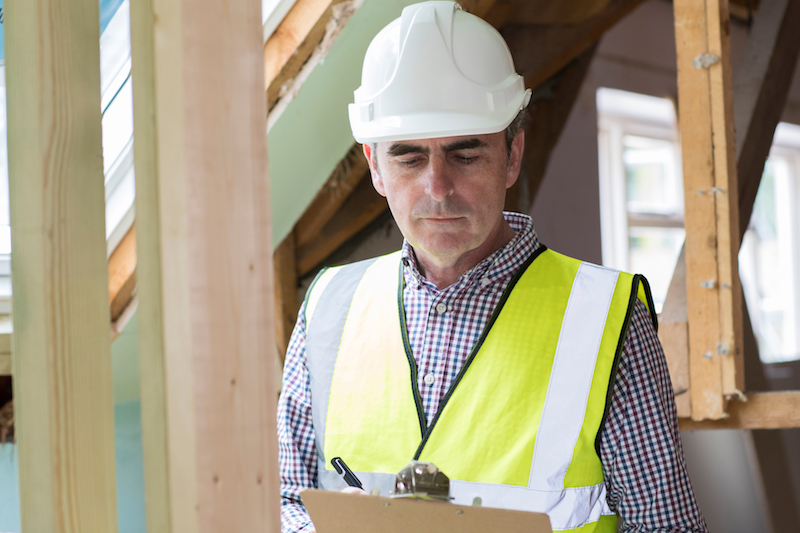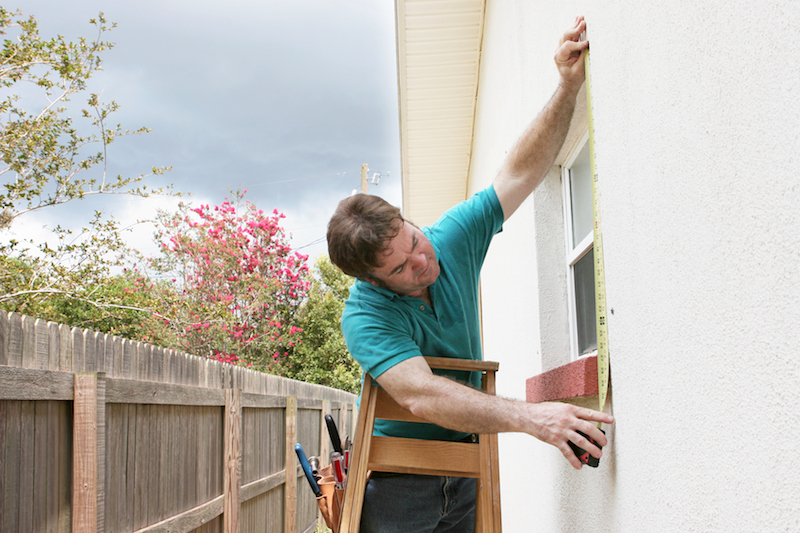Nearly all parts of the country are subject to high winds. It’s important that your house is designed to withstand a high wind storm. Knowing whether your house is storm ready requires a few simple steps.
One of the first things to consider is where you live. Coastal areas, for example, are more susceptible to powerful winds such as hurricanes. Local building codes for these areas typically require homes to resist much higher wind speeds than inland homes. You’ll want to check with your local building department to learn about the codes that govern your area.
Another indicator of a storm-ready house is when it was built. Older homes may not have been built to resist high winds. In Florida, for example, the building codes became much stricter after Hurricane Andrew hit in 1992 and caused severe damage to thousands of homes. A study showed that Florida homes built after 1996 suffered significantly less damage from Hurricane Charley in 2004 than did homes built before 1996.
In addition, to knowing your location’s climate challenges, the local building codes, and the age of your home, answering these five questions can help inform you in determining whether you need to retrofit your home.
1. Have you inspected your home?

This may seem like an unusual question, but in order to determine if your home should be retrofitted, you need to look at some of the critical areas of your home, such as how your roof, walls and foundation are attached, as well as window and garage door protection. These are key to protecting your home from wind damage. Unless you have experience with home construction, we recommend hiring a qualified, licensed home inspector or structural engineer to perform an inspection and point out for you any areas that needed to be retrofitted. The following (#2–5) are the things they should look for.
2. Is your roof properly secured?
You may have seen homes that have lost their roofs after a storm. The reason? Typically, these roofs were only nailed to the home’s walls instead of being attached with metal connectors. Nails can pull out, especially during a powerful wind storm. If you have an attic that you can access, look at the area where the roof framing meets the wall and see if you have metal connectors attaching your roof to the wall framing. If you don’t have an attic or can’t access that area, see whether you can remove some of your soffit (the underside of your roof overhang) and look at the connection from the outside of your house. If you don’t see any metal hardware, you’ll want to add it. This can help ensure that your roof stays attached during a wind event.
In addition to looking at the inside of your roof, you’ll want to look at the roofing material on the outside of your house. Your roofing material, whether it consists of shingles or tiles, should be properly fastened to the roof decking. You’ll want to make sure shingles are each nailed with six nails if you’re in a high-wind area, and concrete or clay tiles are fastened with screws or fully set in mortar or adhesive. Roofing materials held in place with “pads” of mortar or a couple of nails are less likely to withstand high winds and can become destructive, projectile objects during a storm.
3. Are your windows storm ready?

Windows in older homes or in homes outside of coastal areas are not likely to be wind or impact rated and are therefore more susceptible to breakage from wind. There are many windows on the market today that can provide wind protection. First, you want to make sure your windows are rated for the pressure of the wind in your area. There should be a sticker on the window frame with a “DP” (Design Pressure) rating. The higher the DP rating, the more resistant it is to wind. Then you want to ensure your windows are designed to resist objects that may be picked up by the wind and turned into flying projectiles during a storm. Options include the use of impact-resistant windows or hurricane shutters that can be installed when storms are threatening. This applies to any glass in the home, especially sliding glass doors.
4. Are your garage doors secure?
Because of their size, garage doors — especially two-car garage doors — are more susceptible to wind damage than other exterior doors. Garage doors need to be properly attached to the frame of the house. You’ll want to install additional bracing, heavier-gauge tracking, and other necessary hardware to help keep the doors in place during extreme winds. You may also want to consider replacing your garage door with one specially rated for wind resistance. These doors are designed for high-wind events, keeping the wind out where it belongs. As an alternative to a new door, there are also bracing systems available that can retrofit older doors.
5. Is your house properly attached to the foundation?
Wind will find the weak link in your house, which is why you want to make sure all the key connections within your home are properly fastened. If you have a crawl space underneath your house or an unfinished basement, you can determine whether you should reinforce your foundation connection. The lower story of your house should be bolted to the foundation. In older homes, this typically is not the case, so when a storm comes through your house can slide or rotate off the foundation. You’ll want to add bolts and connectors if they’re missing, as well as repair any cracks in your foundation.
If you live in a two- or multiple-story house, you’ll also want to ensure your walls are properly connected from floor to floor using metal straps. This, of course, is not the easiest thing to determine — you have to look behind your drywall. However, if you’re tackling a remodel or addition, it’s a good time to check how your floors are connected and to add the appropriate hardware if needed.
Once you’ve determined the areas in your home that need retrofitting, we recommend working with a qualified, licensed contractor to make the upgrades. It’s important that local building code requirements are always followed when tackling a home retrofit project.


